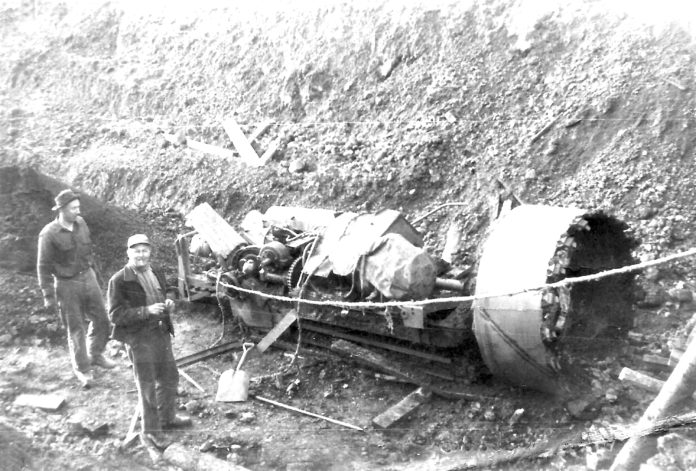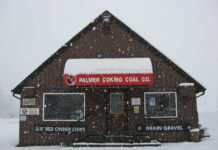The completion of the Alaskan Way Tunnel in 2019 is only the latest in a long history of underground excavation by tunnel boring machines (TBMs or moles). “Bertha” was the 57-foot diameter drill specifically manufactured for the Seattle waterfront project. Back in the early 1950s, a coal mine operator named Franklin D. Plant developed his own patented boring machine, shown in this March 1953 photo in Renton. Plant is facing the camera while his brother-in-law, Charles Starkovich, another coal operator is examining the invention. Earlier Plant had operated the Springbrook Mining Co. whose underground coal mine was located on Benson Hill, east of the Valley Medical Center (formerly Valley General Hospital). Starkovich owned the nearby Spring Glen mine. Both mines were relatively small with Plant’s Springbrook seams producing 200,000 tons of coal from 1931-1950, while Starkovich’s Spring Glen mine extracted another 62,000 tons from 1939-1950. A total of five underground coal mines operated in this area of East Hill Renton.
After his mine closed, Franklin Plant began developing a Rotary Boring Head, the name of his application submitted to the U.S. Patent Office in 1953 and granted three years later. It’s not known if Plant’s machine was ever put to commercial use. A few years later, Franklin and his wife Evelyn moved to Port Angeles and in 1963 purchased a gorgeous 50-acre property on the Straits of Juan de Fuca. Plant died in 1981 while Evelyn followed in 2001. That year the Franklin & Evelyn Plant Green Point Foundation was created. Their 50-acre Green Point preserve west of Sequim off Gehrke Road provides day-school hikes for small groups of students. Its goal is to increase awareness of and respect for the ecosystem as supplemented by Biblical concepts. This photo comes courtesy of Palmer Coking Coal Co. with additional research provided by Donna Brathovde of Ravensdale.







